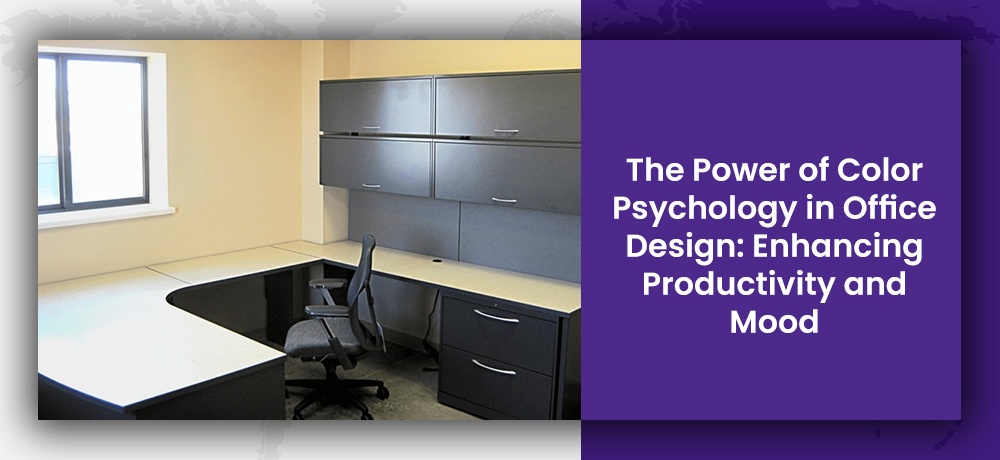The Power of Color Psychology in Office Design: Enhancing Productivity and Mood

Colors have a profound impact on our emotions, mood, and behavior. In office design, the strategic use of colors can influence employees' productivity, creativity, and overall well-being. By understanding the principles of color psychology and applying them thoughtfully in office spaces, businesses can create environments that inspire, motivate, and promote a positive work experience. In this blog post, we will explore the power of color psychology in office design and how it can enhance productivity and mood.
1.) The Basics of Color Psychology:
Color psychology is the study of how colors affect human behavior and emotions. Each color elicits different responses and associations, and understanding these responses is crucial when designing office spaces. Warm colors like red, orange, and yellow are known to be energizing and stimulating, while cool colors like blue, green, and purple have a calming and soothing effect. Neutrals like white, gray, and beige can create a sense of balance and neutrality. By strategically incorporating colors into the office design, businesses can evoke specific emotions and set the right tone for the workspace.
2.) Enhancing Productivity with Colors:
The choice of colors in an office can significantly impact employee productivity. For tasks that require focus and attention to detail, such as data analysis or writing, blue and green hues are ideal choices. These colors promote concentration and can improve efficiency. In creative workspaces or brainstorming areas, splashes of yellow or orange can boost energy levels and stimulate innovative thinking. However, it is essential to strike a balance, as excessive use of vibrant colors can be overwhelming and cause distractions.
3.) Improving Mood and Employee Well-being:
Colors play a crucial role in influencing employee mood and well-being. Natural, earthy tones like green and brown can create a sense of harmony and promote a connection with nature, reducing stress and anxiety. Soft blues and cool grays can evoke a feeling of tranquility, enhancing relaxation and mental clarity. When employees feel more at ease in their environment, job satisfaction increases, leading to higher levels of engagement and reduced absenteeism.
4.) Branding and Identity:
Office color schemes should also reflect the company's brand identity and values. Incorporating brand colors in office design helps reinforce a sense of unity and creates a cohesive and professional look. Consistency in branding fosters a strong company identity and communicates a sense of reliability and trustworthiness to clients and visitors.
5.) Considerations for Open Office Spaces:
In open office layouts, it is essential to consider the impact of colors on a larger scale. While open spaces promote collaboration and communication, they can also lead to sensory overload. To maintain a balanced environment, use calming colors for the majority of the space and incorporate pops of more vibrant colors in specific areas to create focal points and zones for creativity and interaction.
6.) Personalization and Flexibility:
Allowing employees to personalize their workspaces with colors that resonate with them can contribute to a positive work experience. Some individuals may find comfort in pastel shades, while others may prefer bolder tones. Offer flexibility in office design so that employees can add personal touches through decorations, artwork, or accent colors, creating a sense of ownership and individuality.
Color psychology is a powerful tool in office design that can profoundly impact employees' mood, productivity, and overall well-being. By incorporating colors that align with the tasks at hand, promoting a sense of relaxation and harmony, reflecting the company's brand identity, and allowing for personalization, businesses can create workspaces that inspire, engage, and uplift their employees. A well-designed office, mindful of color psychology principles, sets the stage for a positive and productive work environment, enhancing both employee satisfaction and business success.